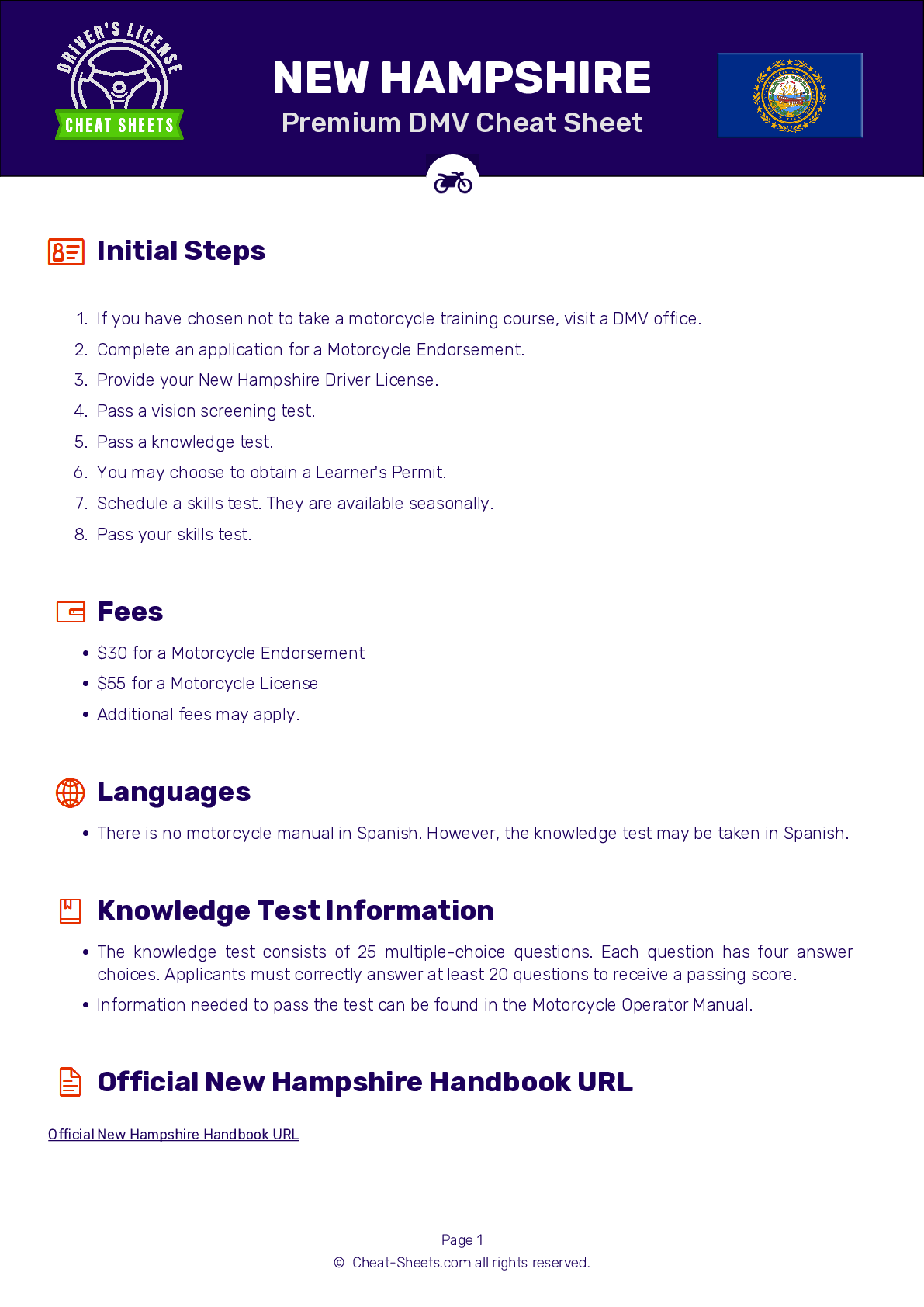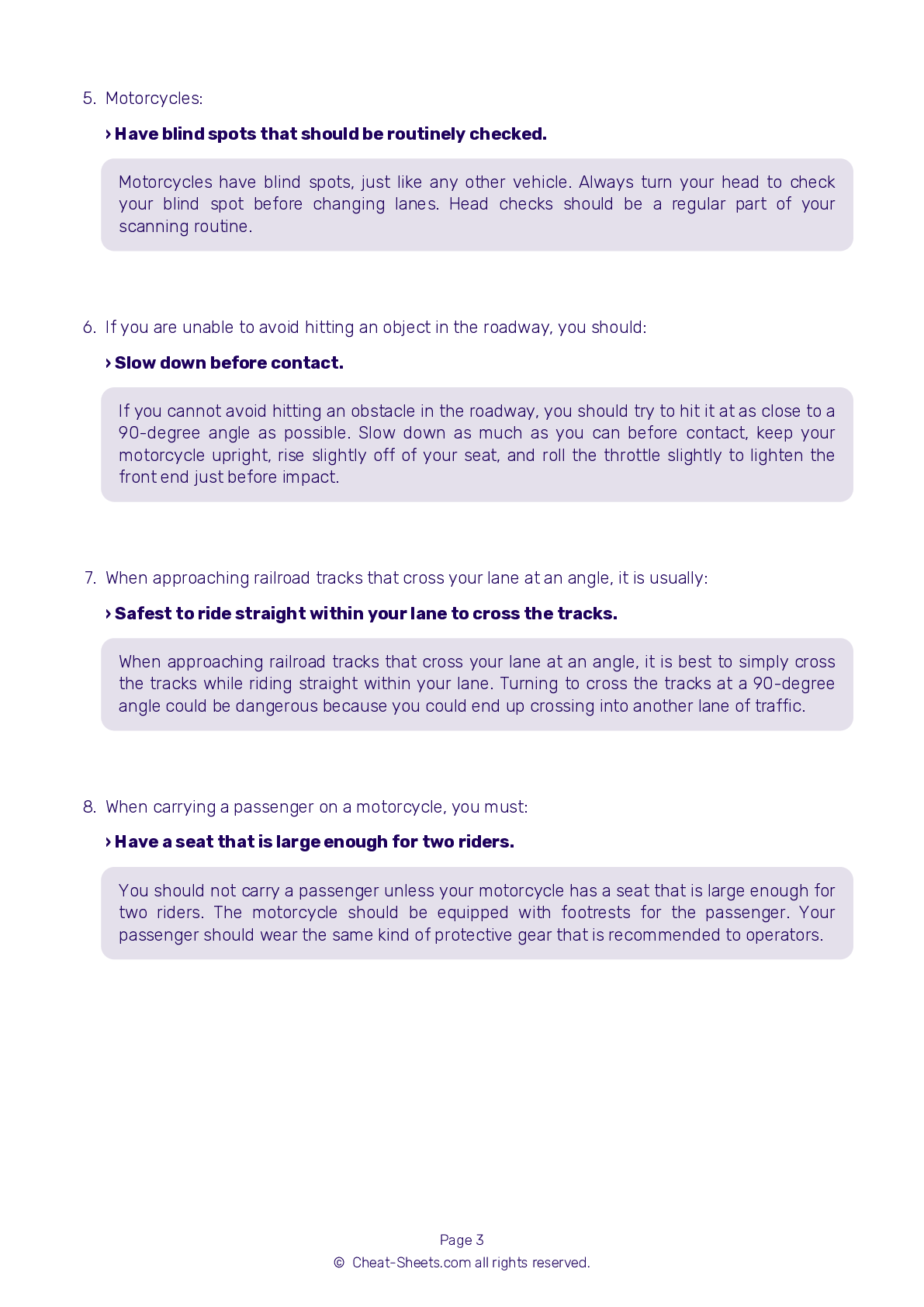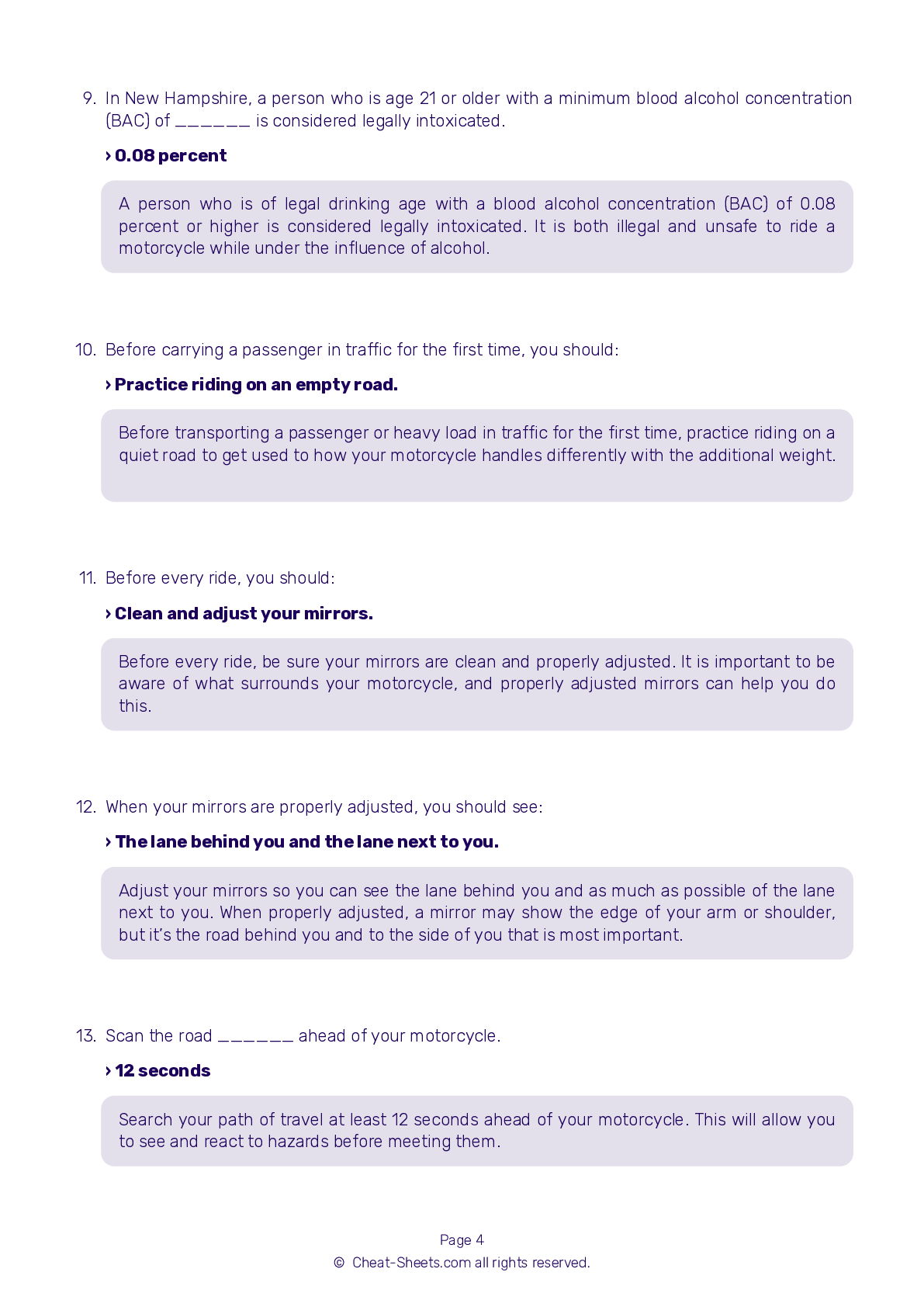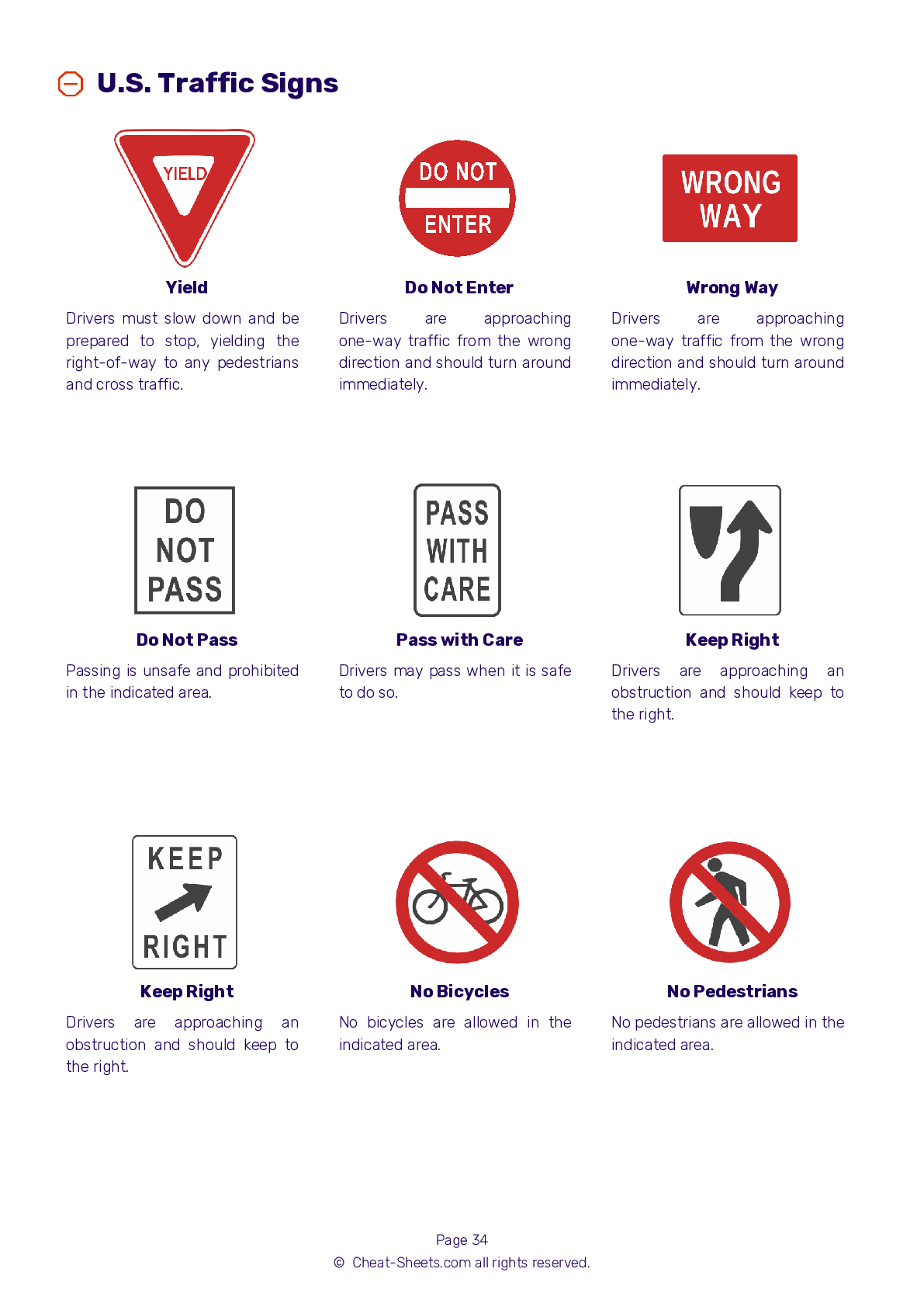2024 New Hampshire Motorcycle Permit Test 3
The following questions are from real DMV written motorcycle permit tests. These are some of the actual permit questions you will face in New Hampshire when getting your motorcycle learners permit. Each motorcycle theory practice test question has three answer choices. Select one answer for each question and select "grade this section." You can find this button at the bottom of the drivers license quiz. For a complete list of questions and answers for New Hampshire please visit https://cheat-sheets.dmv-written-test.com/en/new-hampshire/motorcycle.
Number of Tests
Number of Question
Passing Score
1. When may you not need to increase your following distance?
Explanation
An increased following distance is needed if your motorcycle will take longer than normal to stop. If the pavement is slippery, if you cannot see through the vehicle ahead of you, or if traffic is heavy and another driver may try to squeeze in front of you, open up to a longer following distance.
2. Generally, the body eliminates how many alcoholic drinks per hour?
Explanation
On average, a person's body can eliminate the alcohol content of about one drink per hour. The amount of time required to lower a person's blood alcohol content (BAC) can vary, so it is safest not to operate any motor vehicle after consuming any amount of alcohol.
3. The center portion of a lane:
Explanation
Oily drippings from cars collect in a strip in the center of each lane. Unless the road is wet, this area still generally offers enough traction for motorcyclists to safely ride. You should still avoid riding on big buildups of oil and grease, often found at busy intersections or near toll booths.
4. Most crashes occur during the day. To lessen the chance of being involved in a crash, you should:
Explanation
To minimize your chances of being in a crash, you should make yourself as visible as possible by wearing brightly-colored clothing when riding, even during the day.
5. When riding downhill on a motorcycle with a sidecar:
Explanation
Riding with a sidecar increases the weight of a motorcycle and increases the braking force needed to stop the motorcycle. Slowing and stopping take longer when riding a vehicle downhill than when riding on a flat surface.
6. When braking on a slippery surface, you should:
Explanation




